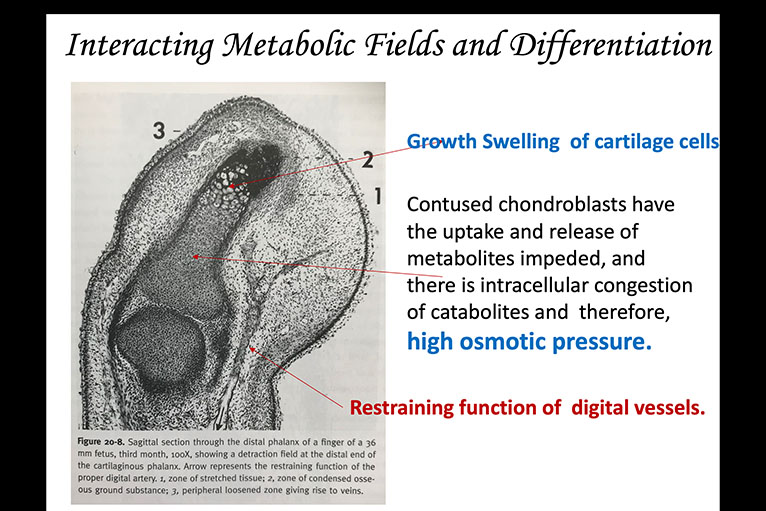SUNDAY 23 NOVEMBER 1PM -5PM
DAY 1. Metabolic Fields: Synovial Joints
Treatment of the knee, ankle, wrist and elbow utilizing the interaction between metabolic fields while applying balanced ligamentous tension, myofascial release and MET. Understand the importance of synovial stem cells and joint physiology.

DAY 1. Metabolic Fields: Growth Breathing.
Two procedures to harness the lungs as the “elastic engines” of thoracic respiration, one technique utilizing the metabolic fields of the superior thorax, and the other using the expanding piston of the liver and diaphragm.
SUNDAY 24 NOVEMBER 10AM -2PM
DAY 2: BLOOD AND BONE
1.PERIOSTEAL MEMBRANE and the OSTEOCYTE-CANALICULAR NETWORK.

The Periosteal membrane mediates the forces of muscles and tendons and gravity and provides an essential connection between the bone marrow (cells, bone fluid and soluble calcium). The role of Sharpey’s fibres and transcortical vessels is essential to supplying adjacent tissues with the resources they need to repair and maintain function. The Osteocyte canalicular network is “a highly complex communication network…at the same order of magnitude as the size of the neural network in the brain.”
Video of Trans-Cortical Vessels
The muscle-bone-membrane-fascia-neurovascular continuum is explored.
2. THE CEREBRO-SPINAL VENOUS SYSTEM (CSVS):
It is a network of small veins, some of them valve less which allow fluctuation of venous blood between the sacrum and the pituitary and hypothalamus.

The CSVS and PITUITARY FUNCTIONS
Venous drainage of the CSVS and Posture
DAY 2 BONE AND BRAIN
3. FUNCTION OF THE CAVERNOUS SINUS, MIDBRAIN and CSVS

The physiology of the cavernous sinus involves a complex interaction between the carotid artery walls and the surrounding venous structures. The carotid artery walls develop 2 walls which facilitates diffusion between the vein and artery and this recycles important molecules back into the artery and brain.
There is an exchange of neurotransmitters and hormones BETWEEN the artery and vein that potentiates their function in a process called countercurrent transfer.
This function is severely compromised by head and neck trauma and explains the symptoms associated with concussive and sub concussive trauma and contributes to the understanding of neurodegenerative disorders.
4. APPLICATIONS in NEURO-DEGENERATIVE DISORDERS, TRAUMA and PTSD.
To understand the tissues which are vulnerable to trauma we need to understand their sympathetic innervation and what makes them vulnerable. There are important biomechanical and physiological factors that mean the brainstem and hippocampus suffer more damage and explain post traumatic symptoms and post concussive symptoms.



